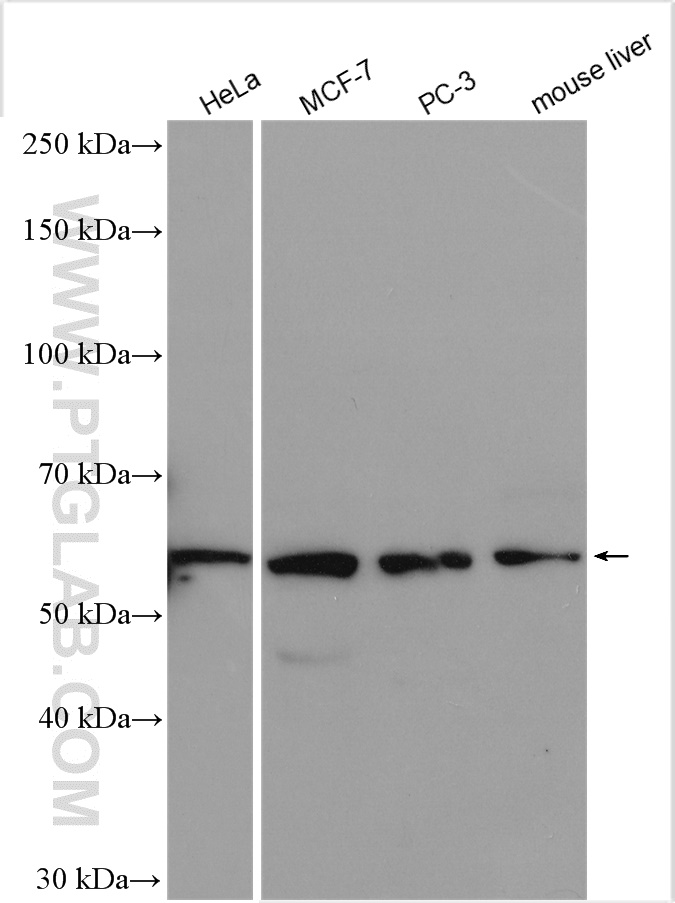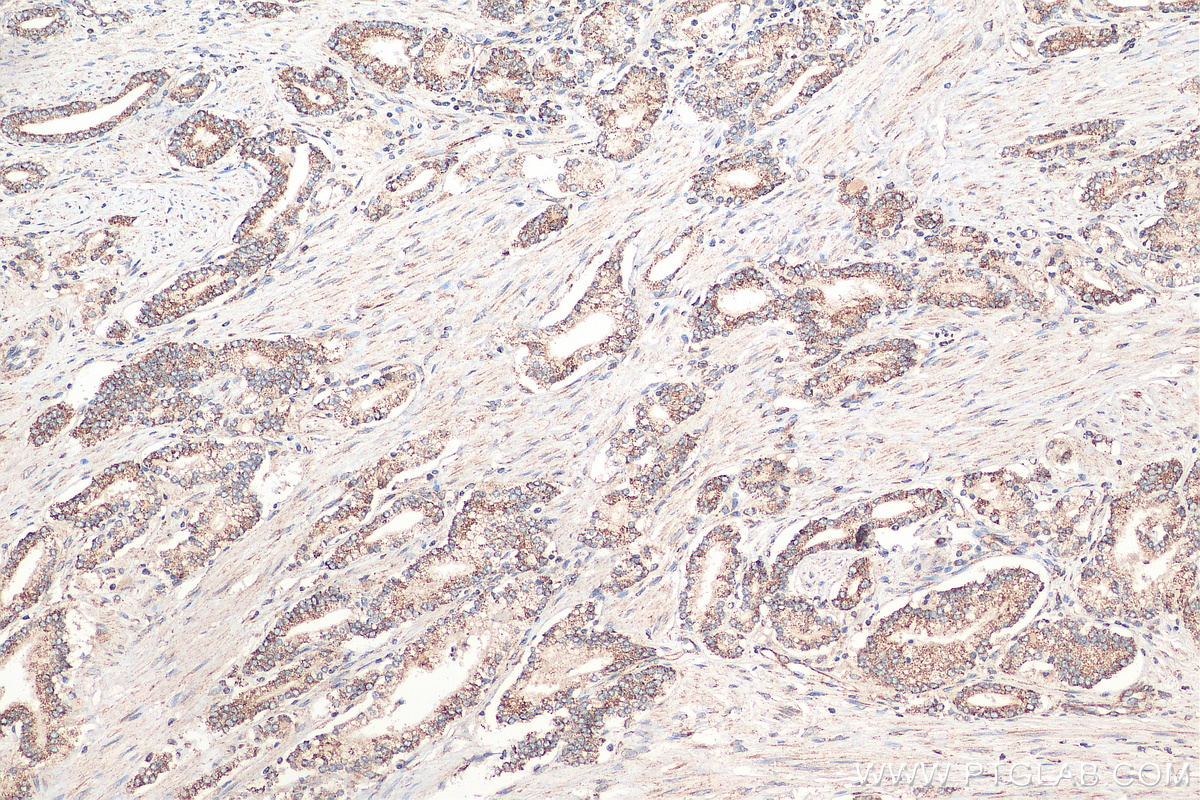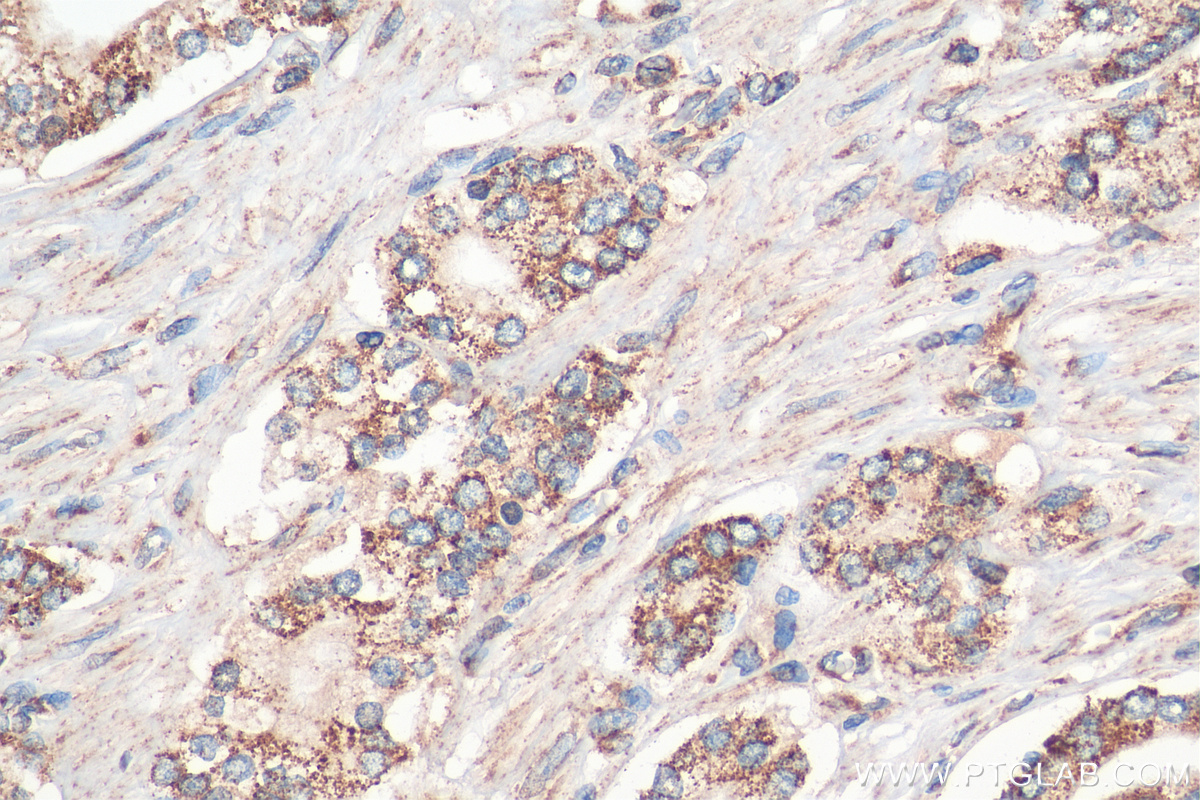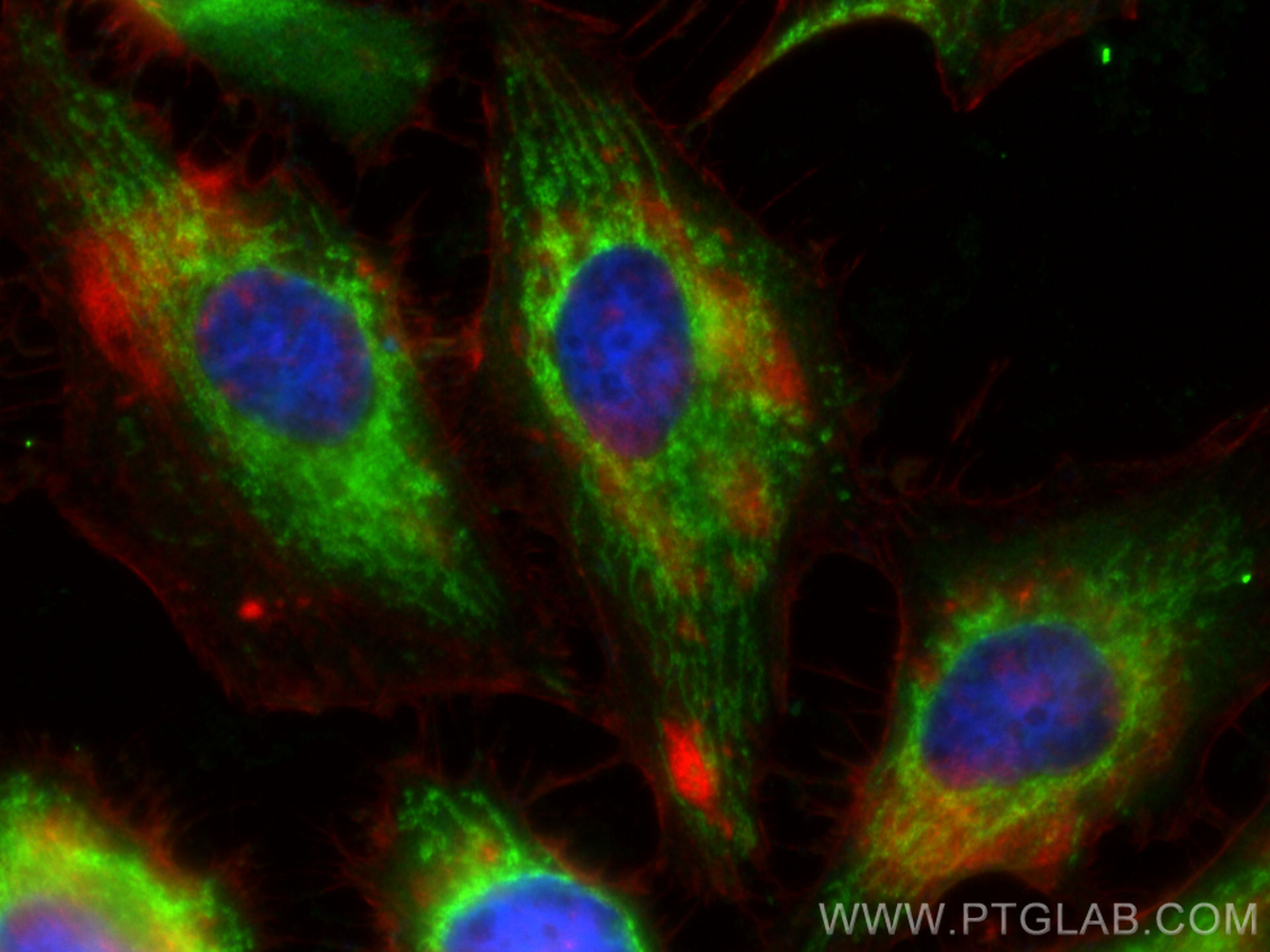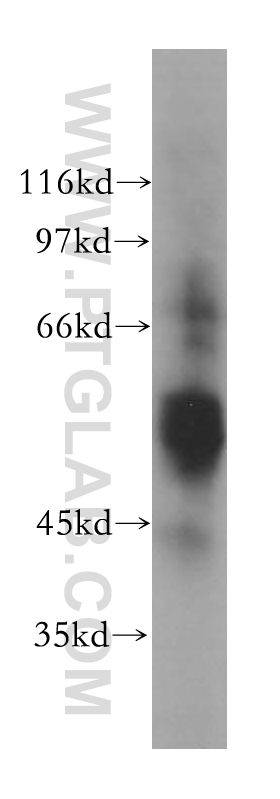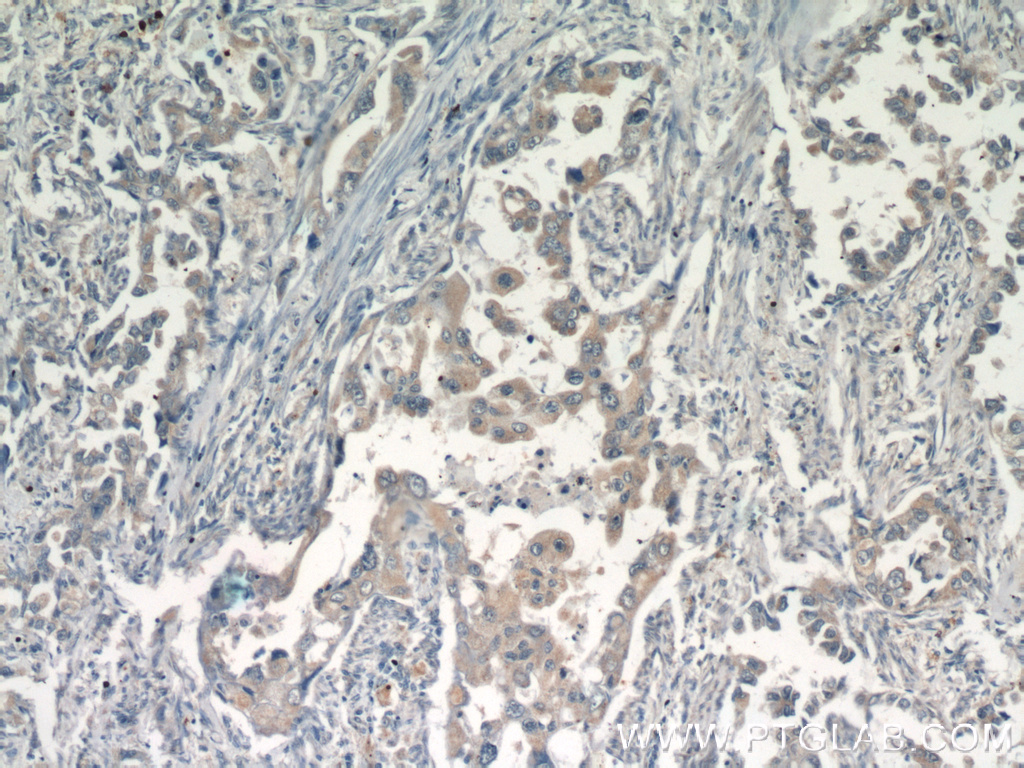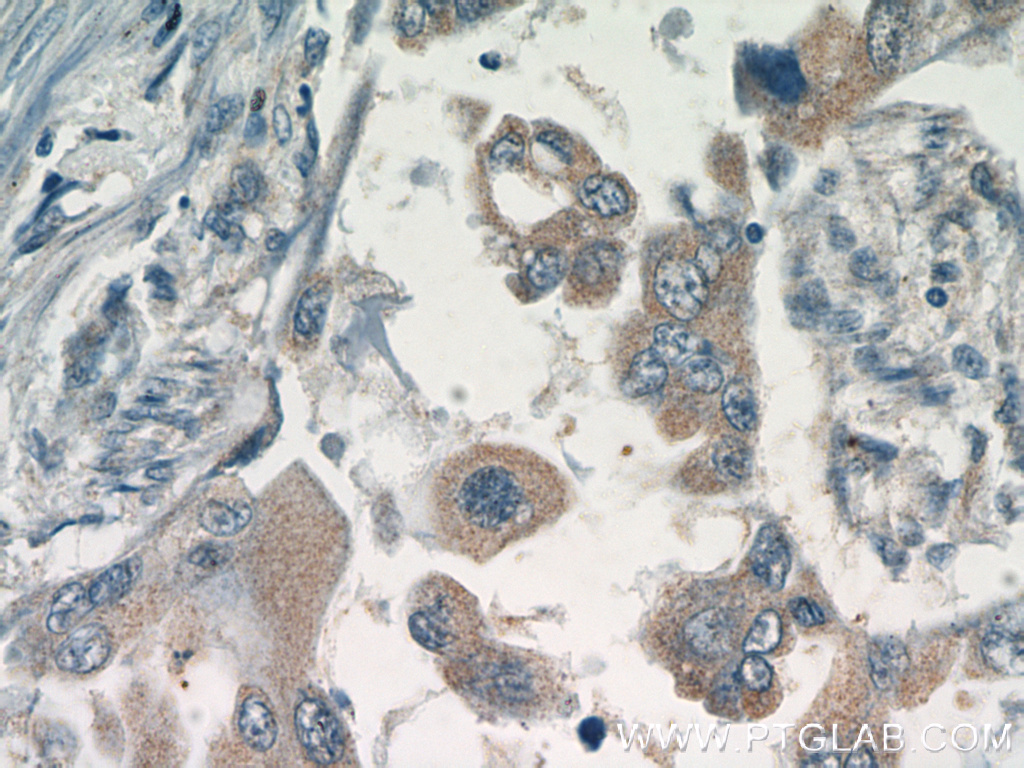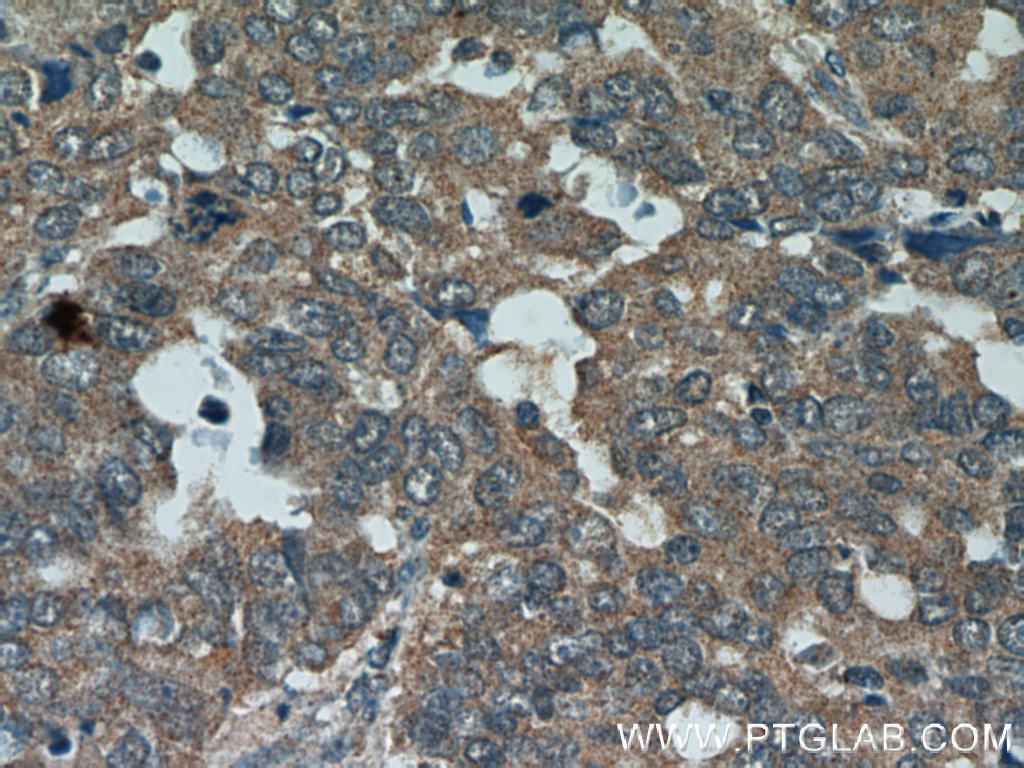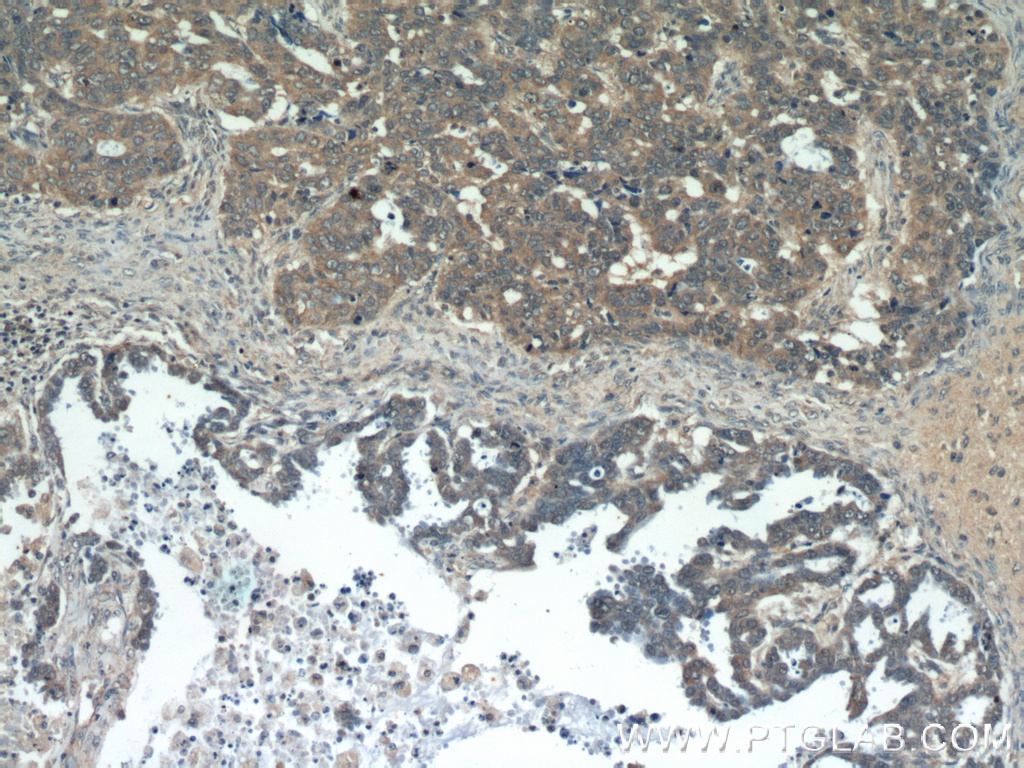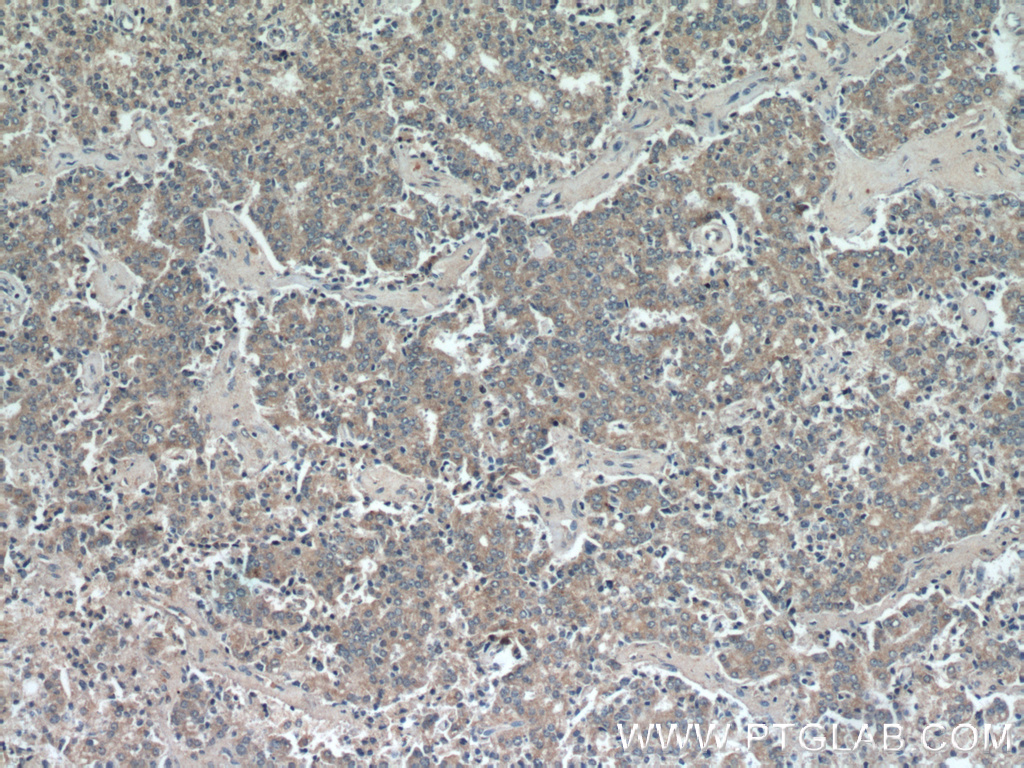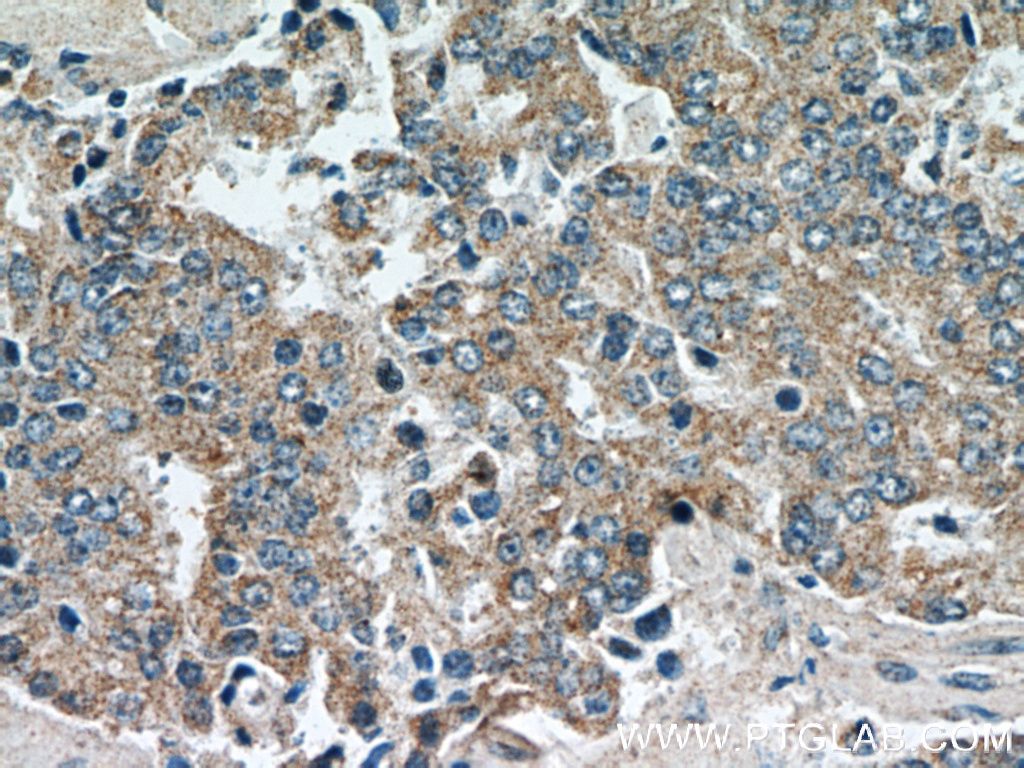验证数据展示
产品信息
13419-1-PBS targets GSK3A in WB, IHC, IF/ICC, Indirect ELISA applications and shows reactivity with human, mouse, rat samples.
| 经测试应用 | WB, IHC, IF/ICC, Indirect ELISA Application Description |
| 经测试反应性 | human, mouse, rat |
| 免疫原 | GSK3A fusion protein Ag4168 种属同源性预测 |
| 宿主/亚型 | Rabbit / IgG |
| 抗体类别 | Polyclonal |
| 产品类型 | Antibody |
| 全称 | glycogen synthase kinase 3 alpha |
| 别名 | Serine/threonine-protein kinase GSK3A, GSK-3 alpha, GSK 3 alpha, Glycogen synthase kinase-3 alpha, EC:2.7.11.26 |
| 计算分子量 | 483 aa, 51 kDa |
| 观测分子量 | 51 kDa |
| GenBank蛋白编号 | BC027984 |
| 基因名称 | GSK3A |
| Gene ID (NCBI) | 2931 |
| RRID | AB_2247995 |
| 偶联类型 | Unconjugated |
| 形式 | Liquid |
| 纯化方式 | Antigen affinity purification |
| UNIPROT ID | P49840 |
| 储存缓冲液 | PBS only, pH 7.3. |
| 储存条件 | Store at -80°C. The product is shipped with ice packs. Upon receipt, store it immediately at -80°C |
背景介绍
Glycogen synthase kinase-3 alpha (GSKA) is one of the two functional isoforms encoded by the GSK gene and
acts as a tumor suppressor through its kinase function, targeting many different proteins.
What is the molecular weight of GSKA?
51 kDa. GSKA is a protein serine kinase composed of 483 amino acids and the catalytic domain shares a high
degree of homology with GSKB, although they are encoded on separate genes.
What is the function of GSKA?
Constitutively expressed across all tissues, GSKA has a large number of target proteins and is therefore involved
in many different pathways (PMID: 19923896). It was first identified as a regulator of glycogen metabolism, as
GSK3A phosphorylates the enzyme glycogen synthase, thereby inhibiting glycogenesis, the conversion of glucose
into glycogen (PMID: 6249596). It has since been shown to interact with many other proteins and is one of the
kinases with most substrates in the cell, with roles in cell cycle progression, proliferation, differentiation, and
apoptosis (PMID: 17570479; PMID: 11563964). Typically, GSKA negatively regulates its downstream substrates,
often tagging proteins for ubiquitination. It has important roles in the Wnt and PI3K signaling pathways.
What is the role of GSK3A in neurodegenerative disease?
GSK3A is known to interact with beta-amyloid and tau, proteins that aggregate in areas of the neuronal system
as part of the pathology of neurodegenerative diseases such as Alzheimer's disease. It has been shown that
GSK3A causes abnormal phosphorylation of the microtubule-binding protein tau in a way that reflects the
pathology of Alzheimer's disease (PMID: 1334849; PMID: 1336152). GSKA has also been shown to process
amyloid precursor protein to beta-amyloid, another protein that forms the inclusion bodies, or Lewy bodies,
that are one of the hallmarks in Alzheimer's (PMID: 1276154). Another protein involved in the pathology of
Alzheimer's is α-synuclein, which is known to be a substrate for GSK-3β phosphorylation (PMID: 24681994).
